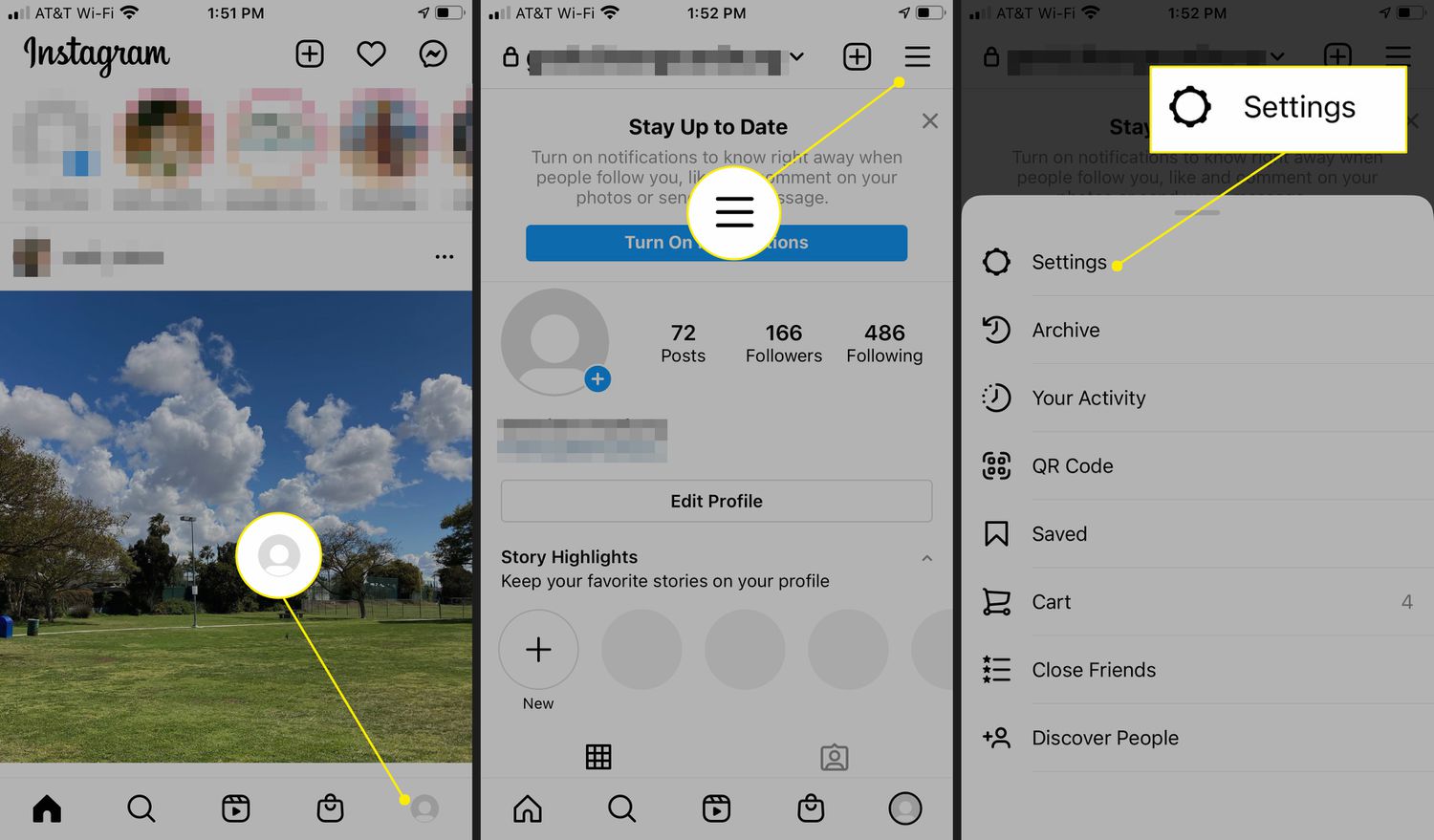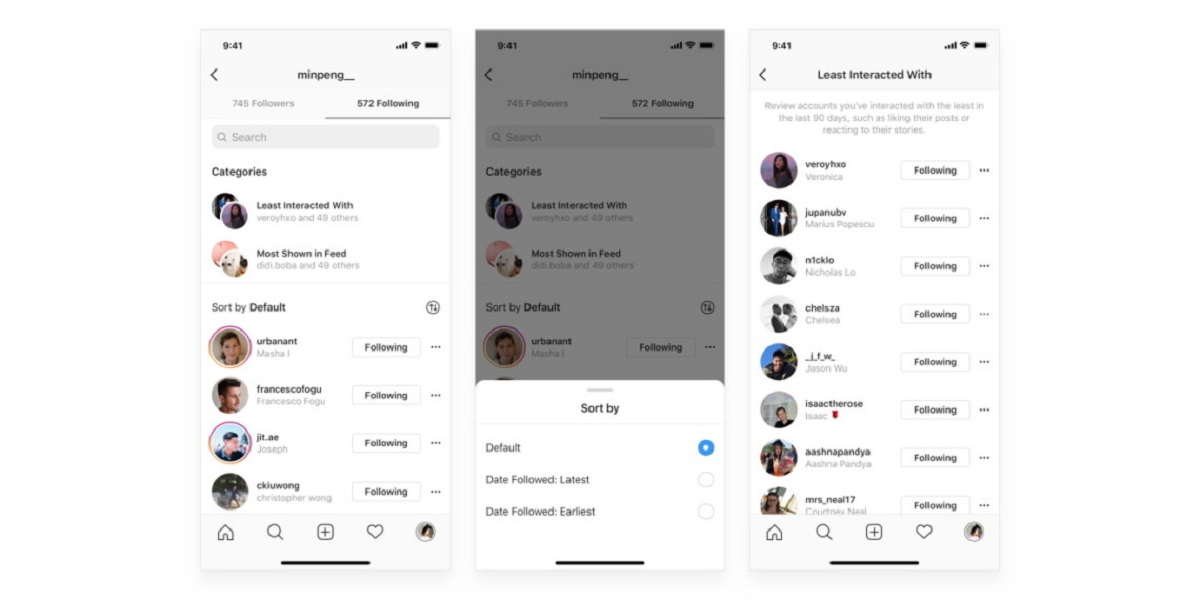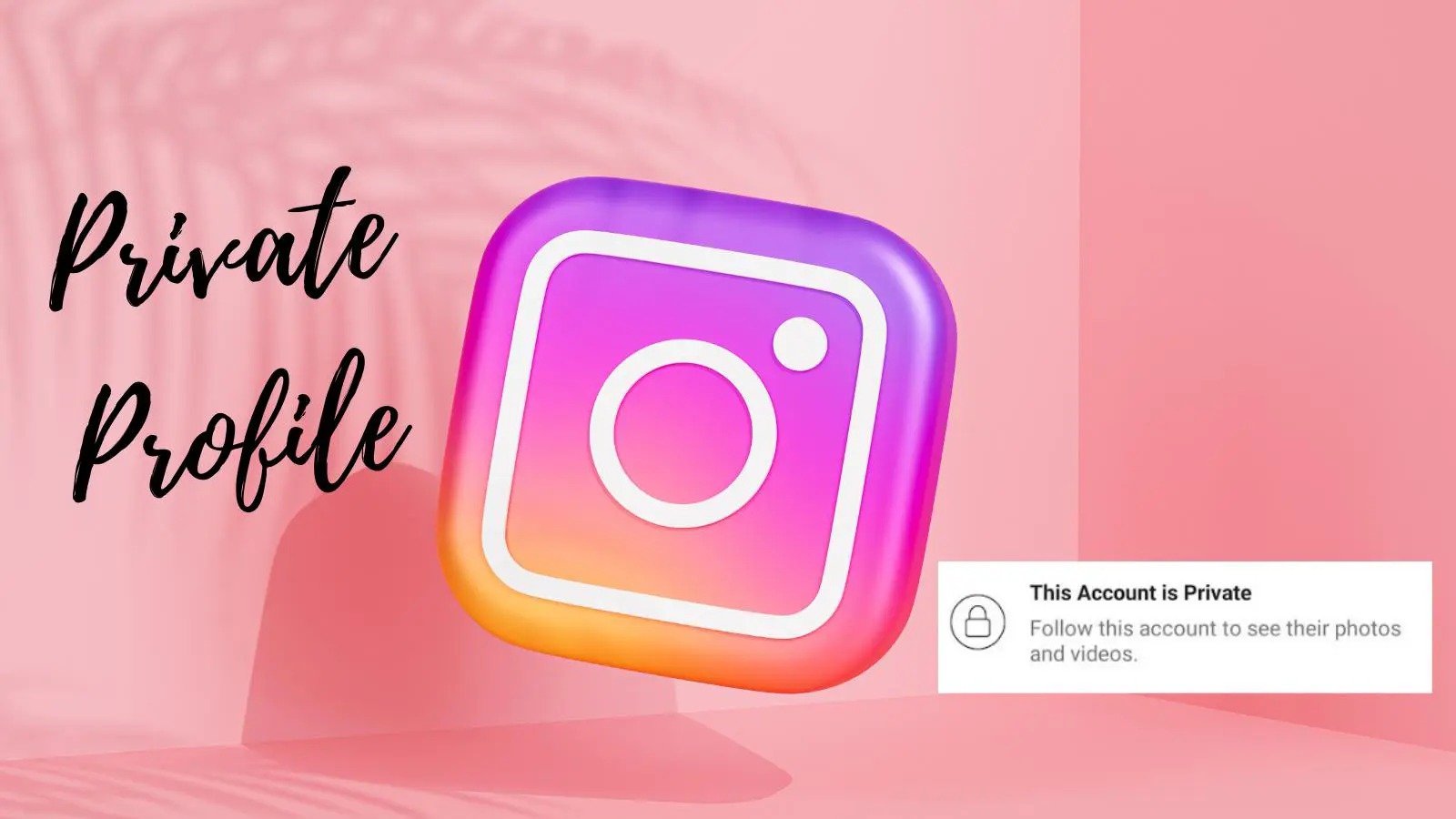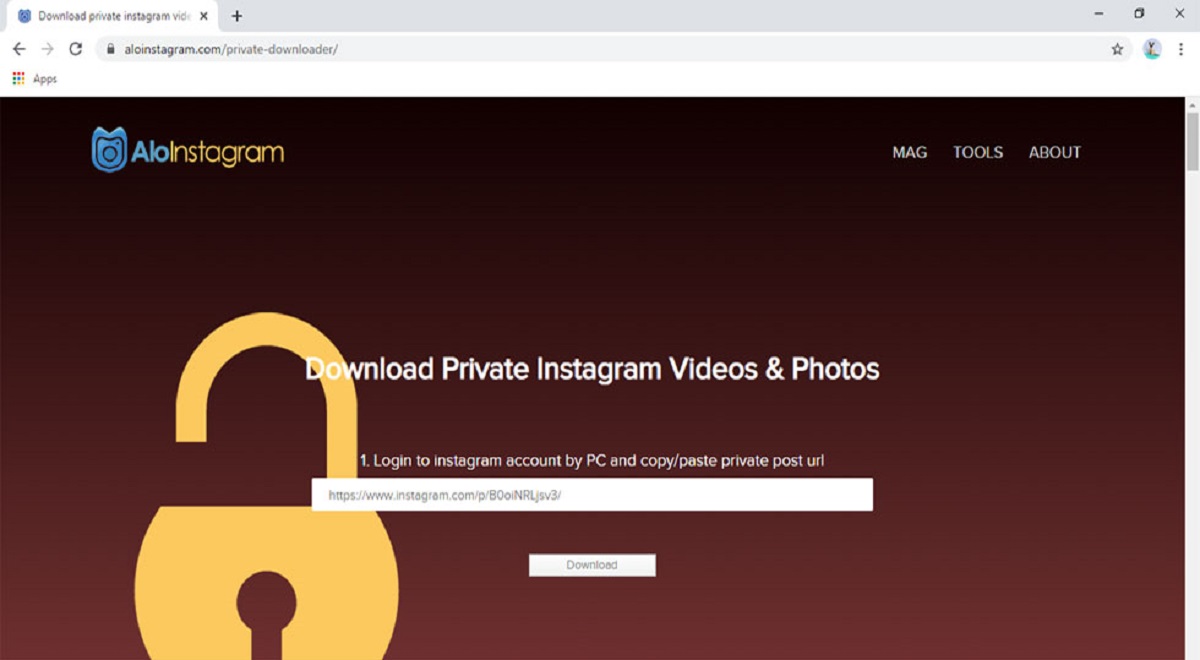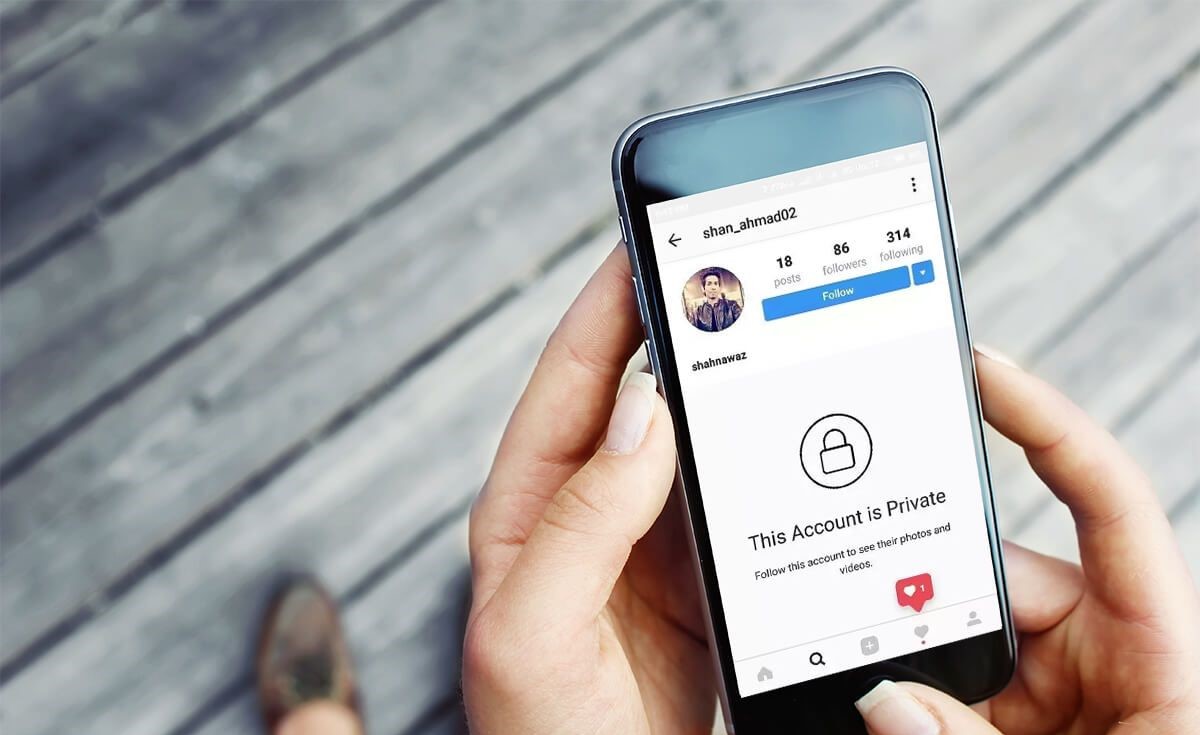Introduction
Instagram is one of the most popular social media platforms, allowing users to share photos and videos with their followers. While many people use Instagram to connect and engage with a wider audience, there are also those who prefer to keep their content private. By making your Instagram account private, you have control over who can see your posts and interact with your profile.
In this article, we will explore the reasons why you might choose to make your Instagram account private and guide you through the process of switching your account’s privacy settings. We will also discuss how to customize your privacy settings, approve followers, manage follow requests, block and remove followers, and hide your stories and posts from certain followers. Additionally, we will share some tips for maintaining a private Instagram account.
Whether you want to protect your personal life, ensure your content is only visible to a select group, or simply prefer a more private online presence, making your Instagram account private can give you the peace of mind you need. So, if you’re ready to take control of your Instagram privacy settings, let’s dive in.
Why should you make your Instagram account private?
There are several reasons why you might want to make your Instagram account private. Here are some of the key benefits:
- Protect your privacy: By making your Instagram account private, you have the power to control who can see your posts and interact with your profile. This is especially important if you want to maintain a level of privacy and share personal moments only with close friends and family.
- Safeguard your content: When your account is private, only approved followers can view your posts, stories, and videos. This helps prevent unauthorized users from stealing or reposting your content without your permission.
- Avoid unwanted interactions: By setting your Instagram account to private, you have the ability to filter out unwanted followers and potential spammers. This reduces the risk of receiving unsolicited messages, comments, or engagement from strangers.
- Curate a close-knit community: Making your account private allows you to create a more intimate and exclusive community on Instagram. You can hand-select who can follow you, interact with your content, and participate in your social circle.
- Protect your professional reputation: If you use Instagram for both personal and professional purposes, having a private account can help you maintain a level of professionalism and separate your personal life from your public brand.
- Enhance security: Keeping your Instagram account private adds an extra layer of security to your online presence. By limiting who can see your posts and profile information, you reduce the risk of being targeted by online scams or cyber threats.
Overall, making your Instagram account private gives you greater control over your online presence and allows you to share content with a select audience. Whether you’re concerned about privacy, content protection, unwanted interactions, or maintaining a professional image, switching to a private account can help you achieve these goals.
How to switch your Instagram account to private
Switching your Instagram account to private is a straightforward process. Follow these steps to make your account private:
- Open the Instagram app: Launch the Instagram app on your mobile device. If you don’t have the app installed, you can download it from the App Store (iOS) or Google Play Store (Android).
- Access your profile: Tap on the profile icon located at the bottom-right corner of the screen. This will take you to your Instagram profile page.
- Go to settings: On your profile page, look for the three horizontal lines or the gear icon (depending on your device) in the top-right corner. Tap on it to access the settings menu.
- Select Privacy: Within the settings menu, scroll down until you find the “Privacy” option. Tap on it to proceed.
- Switch to Private Account: In the Privacy settings menu, locate the “Account Privacy” section. You will see a switch labelled “Private Account.” Tap on the switch to enable it. Once enabled, the switch will turn blue, indicating that your account is now private.
- Confirm the changes: A pop-up message will appear, asking you to confirm the changes. You will be notified that only your approved followers can see your future posts and that your existing followers will not be affected.
- Done! Once you confirm the changes, your Instagram account will be private. Only users you approve will be able to see your posts, stories, and other content.
Keep in mind that making your account private does not affect your existing followers. They will still be able to see your content unless you manually remove or block them. It’s also worth mentioning that when you switch to a private account, any previously recorded screenshots or shares of your content will no longer be visible to non-followers.
Now that you know how to switch your Instagram account to private, let’s move on to customizing your privacy settings to further protect your online presence.
Customizing your privacy settings
After switching your Instagram account to private, you have the option to customize and fine-tune your privacy settings. Here are some key ways to customize your privacy on Instagram:
- Hide your profile from search engines: By default, Instagram allows search engines to index your profile information. However, if you want to further protect your privacy, you can choose to hide your profile from search engines. Simply go to the Privacy settings in your Instagram account and toggle off the “Allow Search Engines to Index Your Profile” option.
- Control who can comment on your posts: Instagram allows you to limit who can comment on your posts. You can choose from options such as “Everyone,” “Only People You Follow,” or “Only Your Followers.” To access this setting, go to the Privacy settings, tap on “Comments,” and select the desired option.
- Restrict unwanted interactions: Instagram provides the option to restrict certain accounts from interacting with your content. When you restrict an account, their comments on your posts will be visible only to them, and they won’t be able to see when you’re active on Instagram or when you’ve read their direct messages. To restrict an account, go to their profile, tap the three dots at the top, and choose the “Restrict” option.
- Manage tags and mentions: You have control over who can tag and mention you in posts and comments. To manage these settings, go to the Privacy settings, tap on “Tags” or “Mentions,” and choose the desired options, such as “Everyone,” “People You Follow,” or “No One.”
- Filter offensive comments and spam: Instagram provides tools to automatically filter out offensive comments and spam. You can access these options in the Privacy settings under “Comment Controls.” Toggle on the options that best suit your preferences.
- Manage story sharing: Instagram allows you to control who can share your stories. To manage these settings, go to the Privacy settings, tap on “Story,” and select the desired option, such as “Everyone,” “People You Follow,” or “No One.”
- Control visibility of your activity: You have the option to control the visibility of your activity, such as liking and commenting on posts, following other accounts, and more. To manage these settings, go to the Privacy settings, tap on “Activity Status,” and toggle on or off the “Show Activity Status” option.
By customizing your privacy settings on Instagram, you can further enhance the security and privacy of your account. It’s important to regularly review and update these settings to ensure they align with your preferences and comfort level.
Now that you’ve learned how to customize your privacy settings on Instagram, let’s explore how to manage followers and requests.
Approving followers and managing requests
One of the benefits of having a private Instagram account is the ability to control who can follow you. Here’s how you can approve followers and manage follow requests:
- Review follow requests: When your account is private, you will receive follow requests from users who want to follow you. To view these requests, go to your profile, tap on the followers count, and you’ll see a list of pending requests.
- Approve or deny requests: In the list of pending follow requests, you can choose to approve or deny each request individually. To approve a request, simply tap on the “Approve” button next to the follower’s username. Similarly, to deny a request, tap on the “Deny” button.
- Block or remove unwanted followers: If you have followers who you no longer want to grant access to your private posts, you can choose to block or remove them. To block a follower, go to their profile, tap the three dots at the top, and select “Block.” To remove a follower, go to your followers list, tap on the follower’s username, and select “Remove Follower.”
- Manage followers: In addition to approving or denying follow requests, you can also manage your existing followers. To do this, go to your profile, tap on the followers count, and you’ll see a list of all your followers. From here, you can choose to block or remove followers as needed.
- Restrict interactions with specific followers: If you want to limit interactions with certain followers without blocking them, you have the option to restrict their access. As mentioned earlier, when you restrict an account, their comments on your posts will be hidden from others, and they won’t see your activity status. To restrict an account, go to their profile, tap the three dots at the top, and select “Restrict.”
- Stay vigilant: It’s important to regularly review and manage your list of followers and follow requests. Keep an eye out for any suspicious or unwanted accounts and take appropriate action to protect your privacy and security.
By actively managing your followers and follow requests, you can ensure that your private Instagram account remains exclusive to those you trust and want to share your content with.
Now that you know how to approve followers and manage requests, let’s explore how to block and remove unwanted followers.
Blocking and removing followers
While having a private Instagram account gives you control over who can see your posts, there may still be occasions where you want to block or remove certain followers. Here’s how you can block and remove unwanted followers:
- Blocking a follower: If there is someone who is continuously bothering you or making you uncomfortable, blocking them is an effective solution. To block a follower, go to their profile, tap the three dots at the top-right corner, and select “Block.” This will prevent them from accessing your profile, viewing your posts, and interacting with your content.
- Removing a follower: If you have followers who you no longer want to grant access to your private posts without completely blocking them, you can remove them from your followers list. To remove a follower, go to your profile, tap the followers count, locate the follower you want to remove, tap their username, and then select “Remove Follower.”
- Reporting abusive or inappropriate content: If a follower is engaging in offensive or inappropriate behavior, you can report their content to Instagram. To report a post or comment, go to the offending content, tap the three dots next to it, and select “Report.” Choose the appropriate reason for reporting and follow the instructions provided.
- Restricting interactions: Another option for managing unwanted followers is to restrict their interactions with your account. When you restrict someone, their comments on your posts will only be visible to them, and they won’t see when you’re active on Instagram or when you’ve read their messages. To restrict an account, go to their profile, tap the three dots at the top-right corner, and select “Restrict.”
It’s important to remember that blocking or removing a follower will also remove any engagements they had on your posts, such as comments or likes. Additionally, they will not be notified about being blocked or removed. However, if you switch your Instagram account to public in the future, blocked or removed followers will still be prevented from accessing your private posts.
By blocking or removing unwanted followers, you can maintain a safe and positive environment on your private Instagram account and ensure that only trusted individuals can engage with your content.
Now that you know how to block and remove followers, let’s explore how to hide your stories and posts from certain followers.
Hiding your stories and posts from certain followers
In addition to customizing your privacy settings and managing followers, Instagram also allows you to control who can view your stories and posts. Here’s how you can hide your stories and posts from certain followers:
- Hide your story from specific followers: If there are followers whom you prefer to exclude from viewing your Instagram stories, you can create a Close Friends list. To do this, go to your profile, tap the three lines at the top-right corner, select “Close Friends,” and then add the desired followers to your Close Friends list. When you post a story, you can choose to make it visible to everyone or just to your Close Friends list.
- Share stories with specific followers: While the Close Friends feature allows you to hide your stories from certain followers, you also have the option to share stories with specific individuals. When posting a story, select the option to send it as a Direct Message instead of sharing it to your story feed. This way, the story will only be visible to the selected recipients and not publicly visible.
- Customize visibility of individual posts: In addition to stories, you can also control the visibility of individual posts. When sharing a post, tap on the “Advanced Settings” option to access additional options. From there, you can choose to hide the post from specific followers, block certain accounts from commenting on the post, or turn off the option for others to share the post.
- Manage visibility from an existing post: If you want to adjust the visibility of a post that has already been shared, go to the post on your profile, tap the three dots at the top-right corner, and select “Edit.” From there, you can change the visibility settings by selecting the desired options mentioned earlier.
By utilizing these features, you have greater control over who can see your Instagram stories and posts. You can customize your content to be visible only to a select group of followers or exclude certain individuals from viewing specific content.
It’s important to note that these visibility settings are only applicable to your private account. If you switch your Instagram account to public in the future, all of your stories and posts will become visible to anyone who visits your profile, regardless of the previous visibility settings.
Now that you know how to hide your stories and posts from certain followers, let’s explore some tips for maintaining a private Instagram account.
Tips for maintaining a private Instagram account
When it comes to maintaining a private Instagram account, here are some tips to ensure your privacy and security:
- Be cautious when approving followers: Take the time to review follow requests and ensure that you only approve people you know and trust. Be wary of accounts with suspicious or generic usernames, as they may be spam or bots.
- Regularly review your followers: Periodically check your list of followers to ensure that there are no unwanted or suspicious accounts. If you come across any such accounts, promptly block or remove them.
- Think before posting: Remember that even with a private account, your approved followers will be able to view and interact with your posts. Be mindful of the content you share and consider if it aligns with your desired level of privacy.
- Use strong and unique passwords: Protect your Instagram account by using a strong and unique password. Avoid using common passwords or reusing passwords from other platforms.
- Enable two-factor authentication: Two-factor authentication adds an extra layer of security by requiring a verification code in addition to your password when logging in. Enable this feature in your Instagram account settings.
- Monitor your account activity: Regularly review your account activity, such as logins and connected devices, to ensure that there are no unauthorized access attempts. Report any suspicious activity to Instagram.
- Avoid sharing personal information: Refrain from sharing sensitive or personally identifiable information on your Instagram account. This includes your address, phone number, or any other details that could compromise your privacy.
- Educate yourself on privacy settings: Stay informed about the privacy settings and features available on Instagram. Regularly review and update your settings to align with your preferences and ensure the highest level of privacy.
By following these tips, you can maintain a secure and private Instagram account, allowing you to share moments and engage with your approved followers within a trusted online community.
Now that you’re equipped with these tips, you’re ready to create and maintain a private Instagram account that aligns with your desired level of privacy and security.
Conclusion
In conclusion, making your Instagram account private provides you with the ability to control who can see your posts and interact with your profile. By customizing your privacy settings, approving followers, managing requests, and hiding stories and posts from certain followers, you can ensure a more private and secure online experience.
Switching your Instagram account to private is a simple process, allowing you to protect your privacy, safeguard your content, and avoid unwanted interactions. By carefully managing your followers and follow requests, you can create a close-knit and exclusive community on Instagram.
Additionally, customizing your privacy settings allows you to hide your profile from search engines, control who can comment on your posts, filter offensive comments and spam, and manage tags and mentions. These features provide you with greater control over the visibility and interaction on your profile.
If you encounter unwanted followers, you have the options to block or remove them from your followers list. You can also restrict interactions with specific followers to further manage your online presence. By taking these actions, you can maintain a safe and positive environment on your private Instagram account.
Finally, we provided some essential tips for maintaining a private Instagram account, including being cautious when approving followers, using strong and unique passwords, enabling two-factor authentication, and avoiding sharing personal information. By following these tips, you can enhance the security and privacy of your account.
Now that you have a comprehensive understanding of how to make your Instagram account private and customize your privacy settings, you can create an account that aligns with your personal preferences and protects your privacy. Enjoy sharing moments and engaging with your approved followers within your trusted online community.







